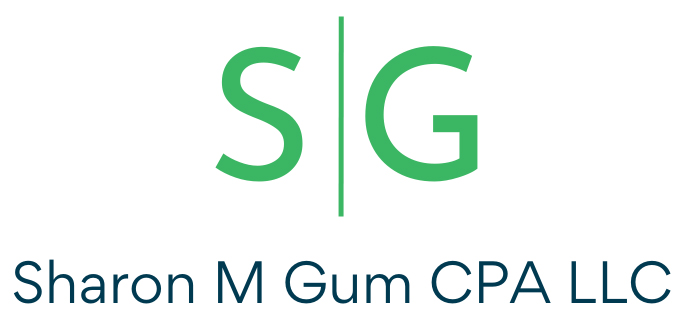Being your own boss comes with a lot of freedom and flexibility. However, it also means taking on responsibilities that employees typically don’t have to worry about, like paying estimated taxes. At Sharon M. Gum, CPA, we work with many talented self-employed individuals, and we understand that navigating estimated taxes can feel a bit daunting. This guide will break down what you need to know to stay compliant and avoid potential penalties.
What are Estimated Taxes and Why Do I Need to Pay Them?
When you work for an employer, taxes are typically withheld from each paycheck throughout the year. However, as a self-employed individual (including freelancers, independent contractors, and sole proprietors), you’re responsible for paying your income tax and self-employment tax (which includes Social Security and Medicare taxes) yourself.
The IRS requires you to pay these taxes periodically throughout the year because they operate on a “pay-as-you-go” system. Instead of one lump sum at tax time, you’ll generally need to make estimated tax payments four times a year.
Who Needs to Pay Estimated Taxes?
You’ll likely need to pay estimated taxes if you expect to owe at least $1,000 in tax for the year, and if your withholding and refundable credits are less than the smaller of:
- 90% of the tax shown on the return for the year, or
- 100% of the tax shown on the return for the prior year (only if the prior year covered a 12-month period).
This generally applies to self-employed individuals, partners, S corporation shareholders, and certain other taxpayers.
Understanding Self-Employment Tax
A significant component of estimated taxes for the self-employed is the self-employment tax. This essentially covers both the employee and employer portions of Social Security and Medicare taxes. For 2025, the self-employment tax rate is 15.3% (12.4% for Social Security up to the annual limit and 2.9% for Medicare).
How to Calculate Your Estimated Tax
Calculating your estimated tax involves estimating your expected income for the year and determining your estimated self-employment and income tax liability. This can seem complex, but here’s a general approach:
- Estimate Your Gross Income: Project how much income you expect to earn from your self-employment activities throughout the year.
- Estimate Your Deductions: Identify any business expenses and other deductions you anticipate claiming.
- Calculate Your Estimated Taxable Income: Subtract your estimated deductions from your estimated gross income.
- Calculate Your Estimated Income Tax: Use the applicable tax brackets to estimate your income tax liability.
- Calculate Your Estimated Self-Employment Tax: Multiply your estimated self-employment income (generally 92.35% of your gross self-employment income) by the self-employment tax rate (15.3%).
- Determine Your Total Estimated Tax: Add your estimated income tax and estimated self-employment tax.
- Divide by Four: Generally, you’ll divide your total estimated tax by four to determine your quarterly payments.
Important Note: This is a simplified overview. Your actual estimated tax liability can be influenced by various factors, including other income sources, deductions, and credits.
When are Estimated Tax Payments Due in 2025?
For the 2025 tax year, the general due dates for estimated tax payments are:
- Quarter 1: April 15, 2025 (for income earned January 1 to March 31)
- Quarter 2: June 16, 2025 (for income earned April 1 to May 31)
- Quarter 3: September 15, 2025 (for income earned June 1 to August 31)
- Quarter 4: January 15, 2026 (for income earned September 1 to December 31)
Note: If a due date falls on a weekend or holiday, the deadline is typically pushed to the next business day.
How to Pay Your Estimated Taxes
The IRS offers several convenient ways to pay your estimated taxes:
- IRS Direct Pay: Make secure payments directly from your bank account (checking or savings) through the IRS website or the IRS2Go mobile app.
- Electronic Funds Withdrawal: You can debit your bank account when e-filing your return.
- Debit Card, Credit Card, or Digital Wallet: The IRS partners with third-party payment processors to offer these options (fees may apply).
- Check or Money Order: Make payable to the U.S. Treasury and mail to the address listed on Form 1040-ES payment voucher.
- Cash: You can pay in person at one of the IRS’ retail partners.
Penalties for Underpayment
Failing to pay enough estimated tax or paying late can result in penalties from the IRS. These penalties are calculated based on the amount underpaid and the period of underpayment. Avoiding these penalties is a key reason to accurately estimate your tax liability and pay on time.
How Sharon M. Gum, CPA Can Help
Navigating the complexities of estimated taxes doesn’t have to be a solo journey. At Sharon M. Gum, CPA, we provide valuable assistance to self-employed individuals:
- Accurate Income and Expense Projections: We can help you develop realistic projections of your income and deductible expenses.
- Estimated Tax Calculation: We can accurately calculate your estimated tax liability, ensuring you pay the correct amount.
- Payment Planning: We can help you plan your quarterly payments and choose the most convenient payment method.
- Tax Planning Strategies: We can offer strategies to potentially minimize your overall tax burden.
- Ongoing Support: We’re here to answer your questions and provide guidance throughout the year.
Don’t wait to think about your tax obligations. Contact Sharon M. Gum, CPA today for personalized guidance on understanding and managing your estimated taxes as a self-employed professional.

Sharon M. Gum, CPA helps businesses throughout Southern Illinois succeed by offering business setup and advisory services, tax preparation, payroll and bookkeeping services. You didn’t start a business to manage payroll and keep track of bank reconciliations. By outsourcing your books to our financial experts, you can get back to doing what you love. With over 30 years working as an accountant in Waterloo IL, Sharon M. Gum, CPA can save you time and money – whether you have 2 employees or 20. We would love to help your business succeed. We are proud of the relationships we’ve built with small business owners throughout Monroe, St. Clair, and Randolph counties.



